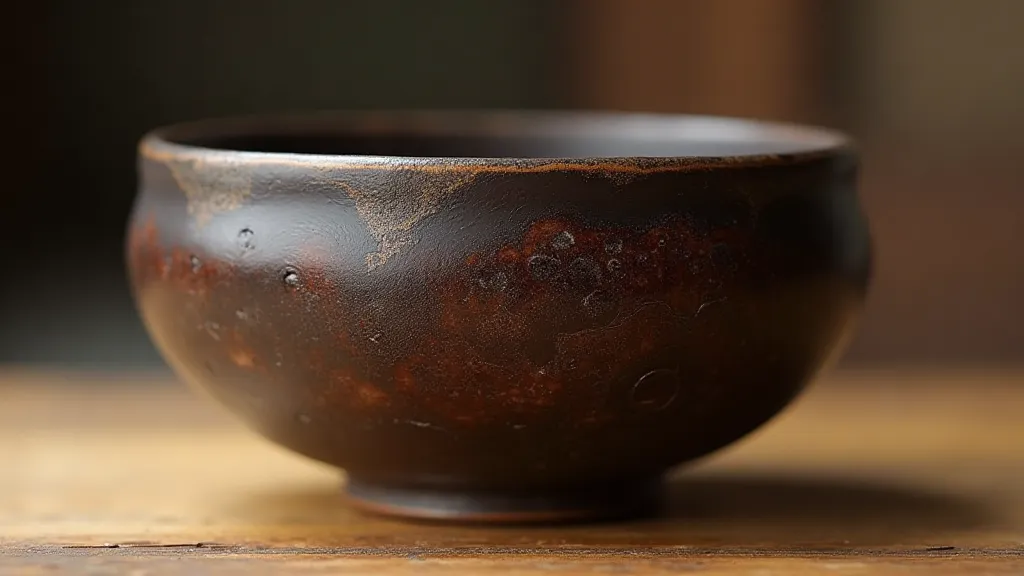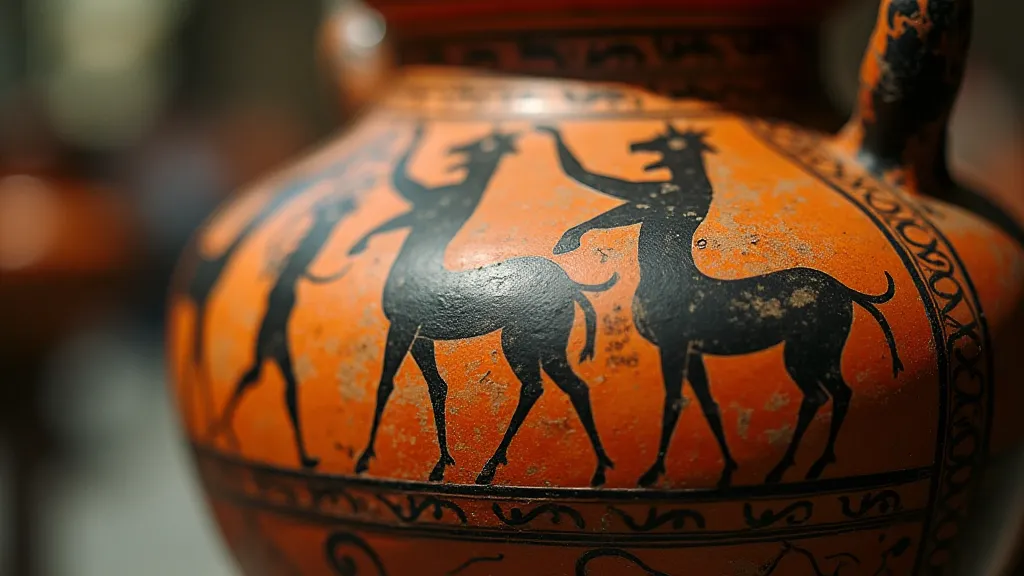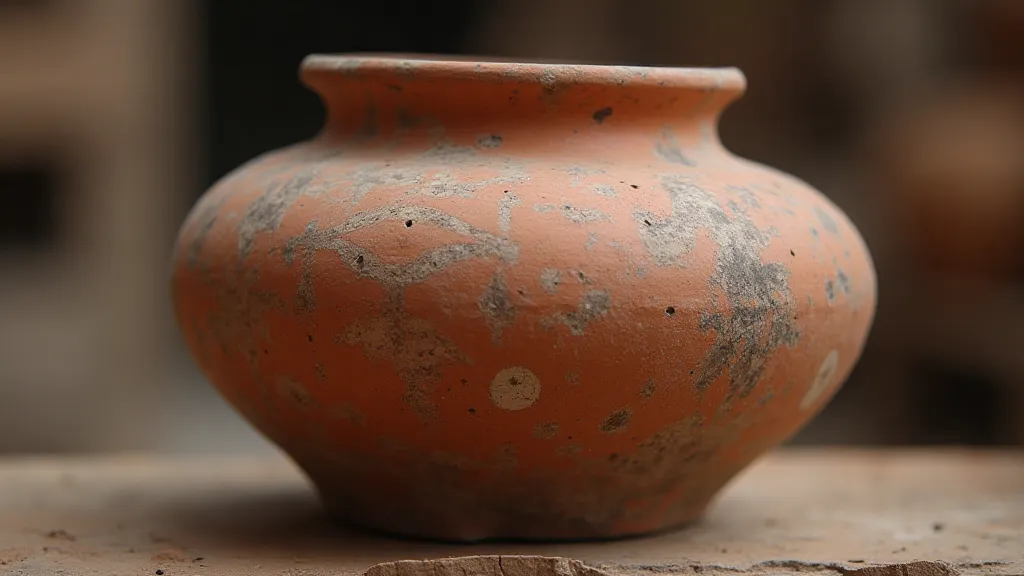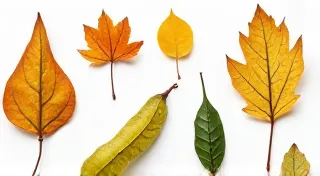Beyond Function: The Ritual Significance of Regional Pottery
Pottery. The word itself conjures images of earth, fire, and a fundamental human need: to contain, to transport, to serve. We often appreciate pottery for its utility – the graceful curve of a pitcher, the sturdy form of a storage jar. But to truly understand pottery, particularly that which has been passed down through generations, is to delve deeper – to explore its role not just in the practical sphere, but within the complex tapestry of human belief, ritual, and spiritual connection. This isn't merely about clay and kilns; it's about vessels holding centuries of stories, prayers, and a profound link to the land.
I remember the first time I truly understood this. I was in a small, dusty shop in Oaxaca, Mexico, surrounded by a bewildering array of ceramics. My grandfather, a quiet man who’s hands were permanently stained with soil from his own garden, stopped before a series of intricately painted urns. He didn't comment on their artistic merit, or their market value. Instead, he simply closed his eyes and nodded slowly, a faint smile playing on his lips. “These,” he whispered, “speak of ancestors. Of harvests and offerings.” That moment sparked a lifelong fascination with the cultural weight embedded within seemingly simple clay forms.
The Japanese Tea Ceremony and Raku Ware
Perhaps nowhere is the connection between pottery and ritual more powerfully evident than in Japan. The Japanese tea ceremony, or *chanoyu*, is a meticulously choreographed ritual centered around the preparation and drinking of matcha, a powdered green tea. While the ceremony itself is a profound display of respect, harmony, and tranquility, the pottery used is integral to the experience. Raku ware, in particular, holds a significant place. The name “Raku” comes from the Zen Buddhist concept of carelessness or spontaneity, reflecting the unique firing process. After initial firing, the pottery is rapidly cooled in a reduction kiln—a process that deliberately limits oxygen—leading to unpredictable and beautiful results: rich, often metallic glazes and dramatic crackling on the surface. This element of chance is deliberately incorporated, symbolizing humility and the acceptance of imperfection – core tenets of Zen philosophy.

The forms themselves are also carefully considered. The bowl is not merely a container; it’s an object of contemplation, its weight, texture, and imperfection adding layers of meaning to the ritual. Each imperfection, each unexpected glaze variation, is a testament to the inherent unpredictability of nature and the human endeavor. For the participants, holding that bowl is an act of connection - a tangible link to centuries of tradition and spiritual practice.
Navajo Pottery and Prayer Vessels
Moving across the globe to the American Southwest, we find a different, yet equally compelling, story woven into the clay. Navajo pottery, traditionally, wasn’t primarily used for utilitarian purposes. While storage jars existed, the most significant pottery held ceremonial roles. These "prayer vessels," often smaller and more elaborately decorated, were integral to healing ceremonies and ancestral veneration. The intricate designs – often geometric and abstract, but deeply symbolic – weren't merely decorative; they represented clan affiliations, spiritual guidance, and prayers for rain, health, and prosperity. The creation of these vessels was a sacred act, undertaken by skilled potters who acted as intermediaries between the human and spiritual realms.
The process itself was often accompanied by specific prayers and songs, imbuing the pottery with a spiritual charge. These vessels would then be placed in sacred locations – hogans, medicine bundles – or offered to the spirits. Sadly, the production of traditional Navajo pottery has significantly declined due to cultural shifts and the increasing dominance of mass-produced goods. However, there is a renewed effort among younger generations to revive this invaluable art form, recognizing its profound cultural significance and its power to reconnect with ancestral traditions.
Ancient Greek Amphorae and Dionysian Rituals
Returning to the Mediterranean, we encounter the imposing amphorae of ancient Greece. While these large storage jars were certainly used for transporting wine, olive oil, and grain, their significance extended far beyond mere practicality. They were frequently employed in religious ceremonies, particularly those dedicated to Dionysus, the god of wine, fertility, and theatre. During Dionysian festivals, amphorae would be filled with wine and offered to the god as a libation—a ritual offering of liquid. The imagery painted on these vessels – scenes of myths, processions, and celebratory feasts – further amplified their connection to the divine.

Fragments of these amphorae, often discovered during archaeological digs, offer tantalizing glimpses into the religious practices and artistic sensibilities of a bygone era. The act of creating and utilizing these vessels was not simply a craft; it was a form of devotion, a way of participating in a larger spiritual narrative.
Andean Khipu Pots and Memory Vessels
In the Andean region of South America, the Incas used knotted strings called *khipu* to record information, substituting for written language. Interestingly, certain pottery forms, particularly large, bulbous jars, began to be decorated with knotted patterns mimicking the *khipu* system. These "memory vessels" served as visual aids, reminding communities of historical events, lineage records, and agricultural cycles. They weren't literal records of *khipu* information – the relationship is more symbolic – but they demonstrated a desire to preserve and transmit knowledge through a durable and visually engaging medium. These vessels are a powerful testament to the ingenuity and resilience of Andean cultures in the face of adversity.
The ongoing restoration of antique pottery pieces is a delicate process, requiring a deep understanding of the original techniques and materials. Collectors often seek out pieces that retain their integrity—pieces that tell a story. More than just beautiful objects, they are conduits to the past, reminding us of the enduring human need to connect with the spiritual realm, to honor our ancestors, and to express our deepest beliefs through the tangible beauty of clay.

The vessels we're examining are a reminder that pottery transcends mere functionality; it becomes a vessel for cultural memory, spiritual expression, and human connection. By appreciating these artifacts, we are not just admiring their aesthetic beauty – we are acknowledging and celebrating the ingenuity, faith, and craftsmanship of generations past.





